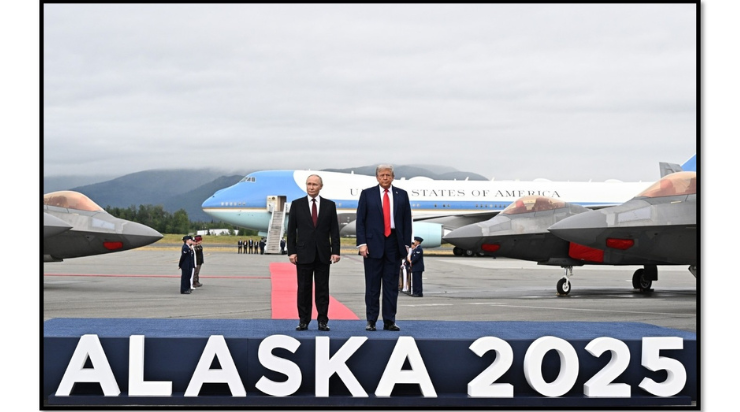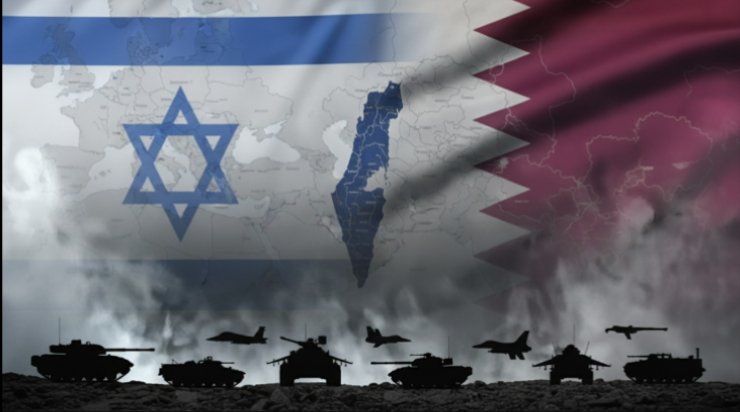When U.S. President Donald Trump met Russian President Vladimir Putin in Alaska, the world watched keenly. It was the first high-level meeting between the two leaders since Russia’s 2022 invasion of Ukraine, and while the three-hour discussion ended without a ceasefire announcement, its implications stick out far beyond Washington and Moscow. For India, a country balancing its ties with both powers while navigating its own strategic ambitions, the summit takes along serious lessons and opportunities.
The Road to Alaska
The Alaska meeting was not an outlying event but the result of years of diplomatic turbulence. Since Russia’s invasion of Ukraine, U.S.–Russia relations have been elucidated by sanctions, military aid to Ukraine, and Russia’s deepening partnership with China. Trump, in his previous term, had often positioned himself as willing to “deal” with Russia, challenging the more hardline stance of NATO allies. Putin, meanwhile, sought legitimacy and sanctions relief without conceding on Ukraine.
Ukraine’s President Volodymyr Zelenskyy, caught between battlefield setbacks and trembling Western unity, had high hopes that Trump might push for a settlement. The European Union, while supporting Kyiv, privately feared that Trump’s return to prominence might weaken NATO resolve. Against this tense background, Alaska was chosen symbolically: midway between Russia and the U.S., representing a potential bridge – or battleground – of understanding.
Inside the Summit
The summit lasted over three hours but produced only brief, carefully worded statements. Putin declared that the two leaders had reached an “understanding,” while Trump insisted, “There’s no deal until there’s a deal.” Both avoided questions from journalists, throwing back the weakness of their talks.
Sources suggest the agenda covered:
- A possible temporary ceasefire in eastern Ukraine.
- Sanctions relief on Russia and access to frozen Russian assets.
- S.–Russia arms control talks, particularly nuclear stability.
- Energy security discussion as Russia’s oil and gas exports still influencing global prices.
Though no joint communiqué was issued, the optics were telling. President Putin looked confident, presenting himself as the equal of an American president despite years of isolation, threats and sanctions. POTUS Trump projected strength to his domestic base, portraying himself as the only U.S. leader capable of “talking sense” to Russia.
The Global Context
The lack of real outcomes disappointed Ukraine as Russia making major wins on the battleground, so Ukraine had been hoping for a ceasefire announcement. NATO allies issued cautious statements, warning against any “grand bargain” that would undermine Ukraine’s sovereignty. China, quietly observing from the sidelines, welcomed the meeting – a long U.S.–Russia dialogue weakens unified Western pressure on Beijing.
Markets reacted nervously, especially in energy. Oil prices briefly dipped on speculation of potential Russian concessions but quickly rebounded when no deal materialized. Global investors are now watching whether U.S. sanctions enforcement will tighten or soften.
Forecast: Where Does This Lead?
Three scenarios now dominate political experts debate:
- Deadlock Diplomacy – talks continue but make up no solution, prolonging the war and sanctions regime.
- Cold Peace Deal – Trump pushes Ukraine toward a frozen conflict, allowing Russia to keep territory but halting active fighting.
- Escalation shoots up – if talks collapse and battlefield conditions can compound if US helps Ukraine strongly, Russia may also double down militarily.
The Trump-Putin Alaska summit suggests that option one is most likely in the short term. Both leaders tested waters but held back from major concessions.
Why India Must Pay Attention
For India, the Alaska summit is not a distant geopolitical playhouse – it directly intersects with India’s energy security, defense modernization, and foreign policy balancing.
Energy Security: Since the war began in 2022, Russia has emerged as India’s largest oil supplier due to offering discounted crude. Any sanctions tightening or U.S.–Russia thaw could disrupt this flow, impacting India’s import bill and inflation management.
Defense Dependence: Around 60–70% of India’s total military hardware is of Russian origin. If US–Russia relations shift – either toward partial reconciliation or renewed animosity – India’s ability to source spare parts and technology will be impacted.
Strategic Balancing: India has followed a fine line as it has been maintaining strong ties with the United States and at the same time refusing to outrightly condemn Russia. The summit signals to India that it needs to continue on the same path, while seeking continous access to both Russian and American technology and Russian resources – primarily Russian oil and gas.
Multipolar Diplomacy: India’s push for leadership in the Global South and its role in BRICS will be shaped by whether the United States and Russia move toward cooperation or confrontation.
Conclusion
The Trump–Putin Alaska summit may not have produced tangible results, but its symbolism lies in reopening dialogue between the US and Russia after years of hostility. For India, the lesson is clear – volatility in great power relations directly impacts its economy and security. India must get ready for multiple scenarios – hedging energy imports, boosting defense indigenization, and deepening both US-backed QUAD and China-Russia-backed BRICS engagement.
In today’s highly polarized world, the space between the US and Russia often determines the maneuverability of emerging powers. India is still, as one of the few countries trusted by both sides, must make the most out of this position with foresight and agility. The Alaska summit is not the end of the story – it is the prologue to a new phase of global power politics, in which India’s choices will be decisive and possibly a trend setter for many global south nations.




